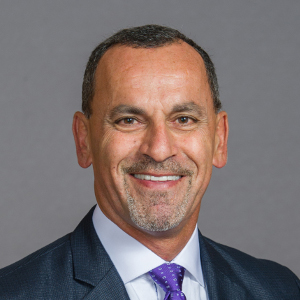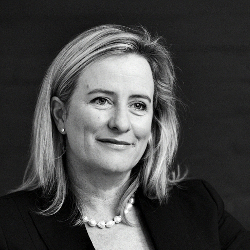Across the board, healthcare is seen as one of the greatest opportunities for supply chain improvement.
Whether it is a hospital, pharmaceutical manufacturer, drug distributor or retailer, every link in the chain could better manage their inventory, or work more closely with suppliers. The opportunity for growth is so great, third party providers are investing heavily in the sector, with specialized services tailored to a growing healthcare logistics market.
But, beyond noting the vast potential for efficiency gains, news reports rarely hone in on how hospitals can better manage their value chain. Perhaps it’s self distribution? Increased investments in technology? Vertical integration? In our latest series, we explore how hospitals can better manage their supply chain, and why they should. But first, the expert’s take:
How can healthcare supply chains improve?

Abe EshkenaziCEO, APICS
In the past, each hospital department was responsible for ordering and maintaining its own inventory. This approach was inefficient and costly.
As the healthcare industry has evolved, many hospitals have become part of affiliated systems or hospital corporations. As part of these changes, centralized supply chain management organizations within these healthcare systems have become much more common, but there continues to be significant opportunity for improvement.
The industry needs to modernize its supplier relationship management activities, increase product standardization, and allow clinicians who perform supply chain functions, such as inventory and ordering, to focus on patient care. Hiring, training and retaining supply chain management professionals should be an imperative for the industry.

Cathy Morrow RobersonFounder and Head Analyst, Logistics Trends & Insights
A number of industry-specific concerns have created opportunities for supply chain improvements. For example, healthcare has been highly regulated over the years; the 2012 patent cliff which caused the U.S. drug market to contract by 1{3d48c2ffeac5b3f3ac54732d49a0b0ca9fd7cec0f4630955c0e7b180206e5d78}; and the rise of the middle class in emerging markets, including China, have all resulted in a rethink of how to store, transport and deliver healthcare goods in the most cost-effective and efficient means possible.
Healthcare companies have responded through mergers & acquisitions and relocating facilities to emerging markets. Logistics providers have responded by following their healthcare customers. In addition, with the rise of biopharmaceuticals and other temperature-sensitive pharma, logistics providers began to introduce temperature-sensitive transportation and inventory management, all tracked and monitored via sensors in many situations. We’re also continuing to observe logistics providers acquire niche pharmaceutical logistics providers to expand capabilities and further penetrate particular geographies.
Technology has played a major role in the transport, inventory management as well as in supplier relations. Online collaborative tools and the management of healthcare goods from origin to destination can be done in real-time including those goods that are sensitive to temperature, humidity and/or bumps while in transit.
IoT, also known as Internet of Things, is another opportunity within the healthcare industry. Using sensors and in combination of your smartphone, one can monitor and share with physicians on a regular basis such readings as blood sugar, heart rate, cholesterol and more. In fact, a lot more can be done via the vaguely described IoT. Many startups are popping up to offer a variety of unique offerings for the healthcare market.
Lastly, white-glove last-mile delivery services are on the rise. On average, the US population is aging and for many of our elderly, staying at home has become a choice. Delivery, set up and training of such medical devices as oxygen machines and even delivery of pharmaceuticals and medical supplies is a service offering that several logistics providers are introducing.

Jon SlangerupPresident and CEO, American Global Logistics
Due to its sensitive and personal nature, the healthcare supply chain is perhaps the most critical and often most criticized service delivery system of all. My experience in healthcare is limited, but I do know a thing or two about creating positive customer experiences, and healthcare services have a ways to go in this regard.
Most importantly, it’s important to acknowledge that transforming healthcare is not obvious or easy. There are many moving parts within the industry’s highly complex, institutionalized system of government regulators, insurance providers, hospitals and clinics, pharmacies, and other physical and digital infrastructure. However, I view the common denominators as being information access and patient care/experience. These “high tech and high touch” components are fundamental to the efforts being made across most supply chains to optimize services and goods fulfillment, and equally critical to healthcare. The key difference here, of course, is that healthcare is about people who deserve and expect very special care.
So what are the core drivers and opportunities for improving the healthcare customer experience? I would say it begins with choice and ends with the quality of care and in between are the various decisions and hand-off points which characterize the healthcare value chain. Fortunately, we live in a time of ubiquitous information and instant communications, so the high tech part of the equation is progressing rapidly. The internet enables an ever-increasing array of healthcare options, underscored in part by the emerging online fulfillment of prescription drugs.
Technology will go a long way in leveling the playing field for those in need of care through instant information access, speedier patient processing, personalized post-care follow up, and proactive reminders about future appointments and care requirements. However, how this ultimately improves the patient experience boils down to how people are treated, which in the final analysis, is the core value proposition that trumps all the rest.

Tania SearyFounding Chairman, Procurious
Healthcare isn’t my forte….but luckily I have a few healthcare gurus in my network….so I “phoned a friend” or two to gain insight on this one.
Traditionally healthcare is an area that is less mature than other more advanced supply chains such as FMCG, IT or automotive which are typically leaner and have had more of a cost focus. For example with inventory, Pharma still holds extremely high inventory with DIO of 6 months+ when others measure in days. Sometimes stocks run into years and the high value of some products can really impact cashflow. Conservatism has meant many companies have not been as ambitious in their outsourcing models for logistics retaining their own warehousing facilities.
Equally the supply chain is complex and fragmented. In many cases there are multiple hand-offs before a product reaches a patient – this adds complexity and cost and prevents end-to-end supply chain management. Digital has a key role to play in this simplification and as the supply chain starts to consolidate, it will begin to change rapidly as distributors/pharmacies become redundant.
Original link in it’s entirety: How can healthcare supply chains improve?

